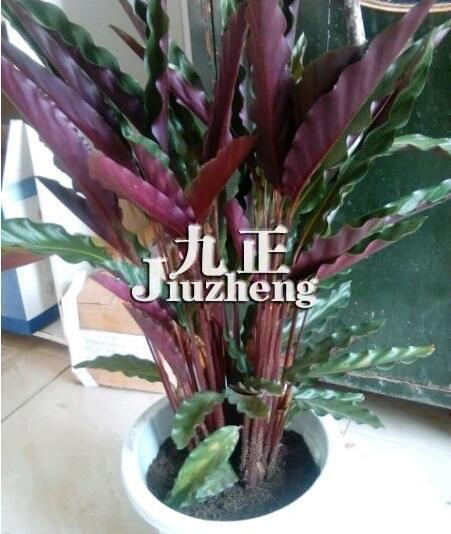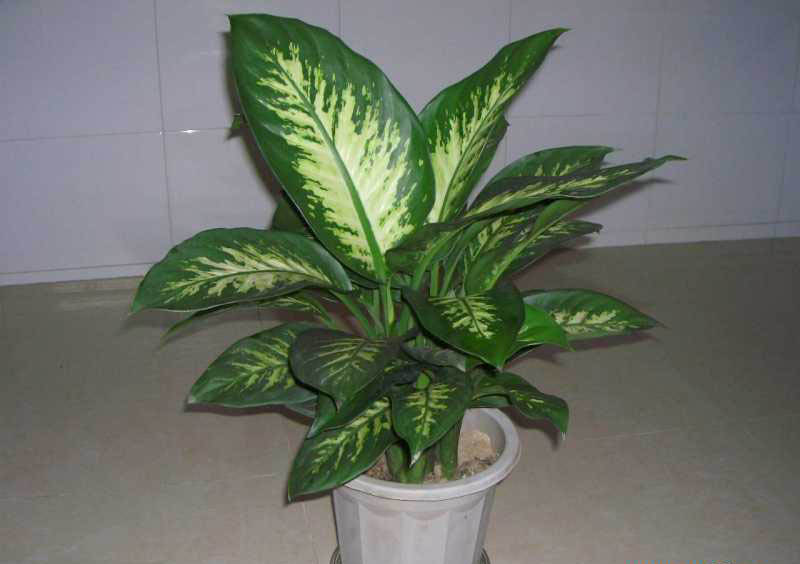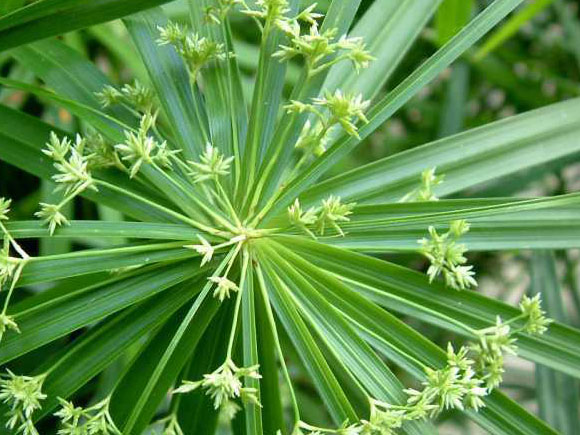How to maintain the purple back taro
Purple-backed bamboo taro is known as red-backed crouching bamboo taro. Leaf blade long elliptic, ovate or broadly lanceolate, leathery, dark green, shiny, light midvein, blood red on the back of the leaf. The stalk, bract and calyx are all bright red with endophytic white florets. Most florets consist of panicles. Flowering from winter to spring. Because of the large number of flowers and dense, and colorful, it is very ornamental.
Sex prefers a warm, humid and shady environment. The suitable temperature for growth is 20-30 degrees Celsius, and the lowest temperature for overwintering can not be lower than 15 degrees Celsius. Placed in a bright room can be enjoyed all the year round. Potted soil is prepared with peat soil, rotten leaf soil and about 1 peat 4 perlite or sand, plus a small amount of base fertilizer. The maintenance methods of watering, spraying and fertilization are basically the same as those of Amorphophallus.

The culture method of purple back taro:
1. Soil: purple-backed taro likes loose, fertile, moist and well-drained acid soil. Pot cultivation can use rotten leaf soil, garden soil and river sand as the same amount of mixed soil and a small amount of base fertilizer as culture soil, which requires that the soil is nutritious, loose and ventilated.
2. Watering: the purple back bamboo taro is not resistant to drought, so it is necessary to give sufficient moisture in the growing season, keep the basin soil moist frequently, and pay attention to spraying water to the leaves, especially when the temperature is high and the air is dry in summer and autumn. to maintain high air humidity. However, attention should not be paid to the accumulation of water in the basin soil, so as not to affect the ventilation of the roots, resulting in poor growth or rotten roots; the temperature is relatively low after the end of autumn, so it is necessary to control the amount of watering and keep the basin soil slightly wet.
3, lighting: purple back taro like shade, avoid direct sunlight, do not put in the sun, otherwise the leaves fade green, lose luster, serious sunburn will cause; but also should not be placed in the dark and poor ventilation for a long time, so as to avoid leaves yellowing and falling off.
4. Fertilization: in the growing season, liquid fertilizer is applied twice a month to ensure its robust growth and luxuriant branches and leaves.
5. Insect diseases: the common diseases of purple back taro are leaf spot and leaf blight. At the initial stage of the disease, 200 times Bordeaux solution was sprayed 2-3 times every half month. It can also be sprayed with 600 times solution of 65% Dysen zinc wettable powder. The common insect pests are mainly shell insects, which are easy to occur when the ventilation is poor. Spray with 1000 times of 50% fenitrothion EC in the nymph stage.
Culture method of purple back taro (basic knowledge):
The best propagation time: the separation of purple back bamboo taro should be carried out after the temperature warms up in spring.
The best growing soil: purple back taro prefers loose, fertile, moist and well-drained acidic soil.
Growth humidity requirements: the air relative humidity most suitable for its growth is 75% 85%, and the high air humidity is beneficial to the development of leaves.
The optimum growth temperature of Amorphophallus sinensis is 20-30 ℃.
The best growth light: purple back taro likes shade, avoid direct sunlight, can not be placed in the sun, otherwise the leaves fade green, lose luster, serious will cause sunburn; but should not be placed in the dark and poor ventilation for a long time, so as to avoid leaves yellowing and shedding.
How to propagate purple-backed bamboo taro-ramet propagation
With the growth of purple back taro, the plant is getting bigger and bigger. If the growth is exuberant, the pot will be changed every 1-2 years. Therefore, it can be combined with changing pots for ramet propagation. When the temperature picks up in spring, ramets can be carried out throughout the year if the temperature and humidity are suitable.
Remove the plant of the purple back taro to the pot and soil, and cut the clump of plants along the growth direction of the underground rhizome with a knife, preferably with stems and leaves or leaf buds. It can be divided into several clusters and then planted in pots. The planted taro was preserved in a shady place to control moisture, and the water could not be watered until normal growth was restored.
How to propagate purple back bamboo taro-cuttage propagation
The purple-backed taro is also often propagated by cutting. In general, the cutting propagation of purple back taro can be carried out at any time when the temperature is not lower than 20 ℃.
Purple back taro cuttings are generally propagated with top shoots, which are 10-15 cm long and cut off. To observe the size of the leaves, it is generally necessary to keep the leaves 1/3 or 1/2, treat the cuttings, put them in a cool place to allow the wound to heal, or use a little rooting powder to speed up rooting.
After the cuttings of Amorphophallus angustifolia were treated, the cuttings were inserted on the seedling bed, and the plant spacing was 5 × 10 cm. The seedbed can be made of breathable soil mixed with less organic matrix, such as river sand, vermiculite or perlite, and the soil should be disinfected before insertion. After cutting, 60% of the sunshade net should be covered to maintain the appropriate temperature and air humidity, and its management method is the same as ramet propagation.
Purple back taro generally takes root 30-50 days after cutting, but the survival rate of cutting is not as high as ramet propagation, generally about 50%.
Is the purple back taro poisonous? The culture method of purple back taro and the flowering period of purple back taro
Purple-backed taro is a perennial herb of the family Amorphophallus, and it is an indoor shade-loving foliage plant, so what is it? There will be such charm, it has how to cultivate, the editor will talk about this knowledge in detail for you today. . Introduction of purple back taro the whole plant is about 1 meter, upright. Leaf blade long ovate or lanceolate. Its branches and leaves grow densely, the plant shape is plump, thick leathery, the leaf surface is dark green and glossy, the midrib is light, the leaf back is blood red, and the leaf forms a sharp contrast, very beautiful. Spikes, bracts and calyx bright red, petals white. The back is fuchsia. . The growth environment of Amorphophallus angustifolia is native to Central America and Brazil, and is cultivated in many provinces in southern China. It likes warm and humid climate and grows in a shady environment; the optimum temperature for growth is 20-30 ℃, which requires a lot of water and is not resistant to drought. More heat-resistant, slightly cold-resistant, more than 5 ℃ can safely pass the winter. . The culture method of purple back bamboo taro mainly uses the separate plant method to propagate, and several points should be guaranteed during the culture period. Soil: purple back taro likes fertile, loose and moist acid soil with good drainage. Pot cultivation can use rotten leaf soil and river sand to mix evenly, add a small amount of base fertilizer as soil cultivation. To ensure the nutrition and permeability of the cultivated soil. In the growing season, liquid fertilizer is applied twice a month to ensure its growth and promote its branches and leaves to flourish. In addition, the basin is turned once every 1-2 years. . Key points for the maintenance of purple-backed taro: purple-backed taro is an excellent indoor shady foliage plant. In order to prevent sun exposure in hot summer, 70%, 80% of the light should be covered, otherwise it is easy to cause injury; the leaves will fade and become dull; but they should not be placed in a dark and poorly ventilated place for a long time to avoid yellowing and shedding of leaves. . watering: the purple back taro is not resistant to drought, so it is necessary to ensure sufficient water during the growth period, keep the basin soil moist, and often spray water to the leaves; especially in the summer and autumn high temperature season, when the air is dry, it is often necessary to spray water on and around the leaves to maintain high air humidity. Be careful not to make the basin soil stagnant, so as not to affect root ventilation, resulting in poor growth or rotten roots; if the temperature is low after the end of autumn, it is necessary to control the amount of water and keep the basin soil slightly wet. Pest control: the common diseases of purple back taro are leaf spot and leaf blight. At the initial stage of the disease, Bordeaux solution was sprayed 2-3 times every 15 days. It can also be sprayed with Dysen zinc wettable powder solution. The common insect pests are mainly shell insects, which are easy to occur when the ventilation is poor. . Introduction to the flowering period of purple-backed taro, purple-backed taro is mainly a foliage plant. Basically, if the temperature is kept above 25 ℃ in a year or so, it will blossom, but its flower is slightly inferior to its colorful leaves, which is why many people do not know whether it will bloom or not. . Introduction to the toxicity of purple-backed taro is non-toxic, it is mainly made of potted plants for indoor decoration, is an excellent indoor shade-loving foliage plant, can be watched for a long time. It can not only add a little bit of vitality, but also bring a good mood. . This is the end of the editor's summary of the knowledge about purple-backed taro. This kind of plant is especially good for potted plants. Friends who like it can plant a pot by themselves and put it at home or in the office. It's all good! For more information about flowers, you can click on the link below!
- Prev

How to maintain the Queen of Silver
The queen of silver is evergreen. The leaves are light silvery gray with dark green markings. Sex likes a warm and humid environment, scatters light, and can withstand shade. The suitable temperature for growth is 20-30 degrees Celsius, and the overwintering temperature is not less than 12 degrees Celsius. Fertile soil with a lot of humus is suitable.
- Next

How to grow and maintain the grass
The name of umbrella grass, water bamboo, water palm bamboo, windmill grass. For cyperaceae perennial evergreen herbs. Stems erect, unbranched, clustered; leaves reduced to sheathlike, wrapped around stem base. Inflorescence is borne at the top of stem, involucral bract 10~20 pieces, every 2 pieces-group up and down opposite, show radial even outspread
Related
- Fuxing push coffee new agricultural production and marketing class: lack of small-scale processing plants
- Jujube rice field leisure farm deep ploughing Yilan for five years to create a space for organic food and play
- Nongyu Farm-A trial of organic papaya for brave women with advanced technology
- Four points for attention in the prevention and control of diseases and insect pests of edible fungi
- How to add nutrient solution to Edible Fungi
- Is there any good way to control edible fungus mites?
- Open Inoculation Technology of Edible Fungi
- Is there any clever way to use fertilizer for edible fungus in winter?
- What agents are used to kill the pathogens of edible fungi in the mushroom shed?
- Rapid drying of Edible Fungi

